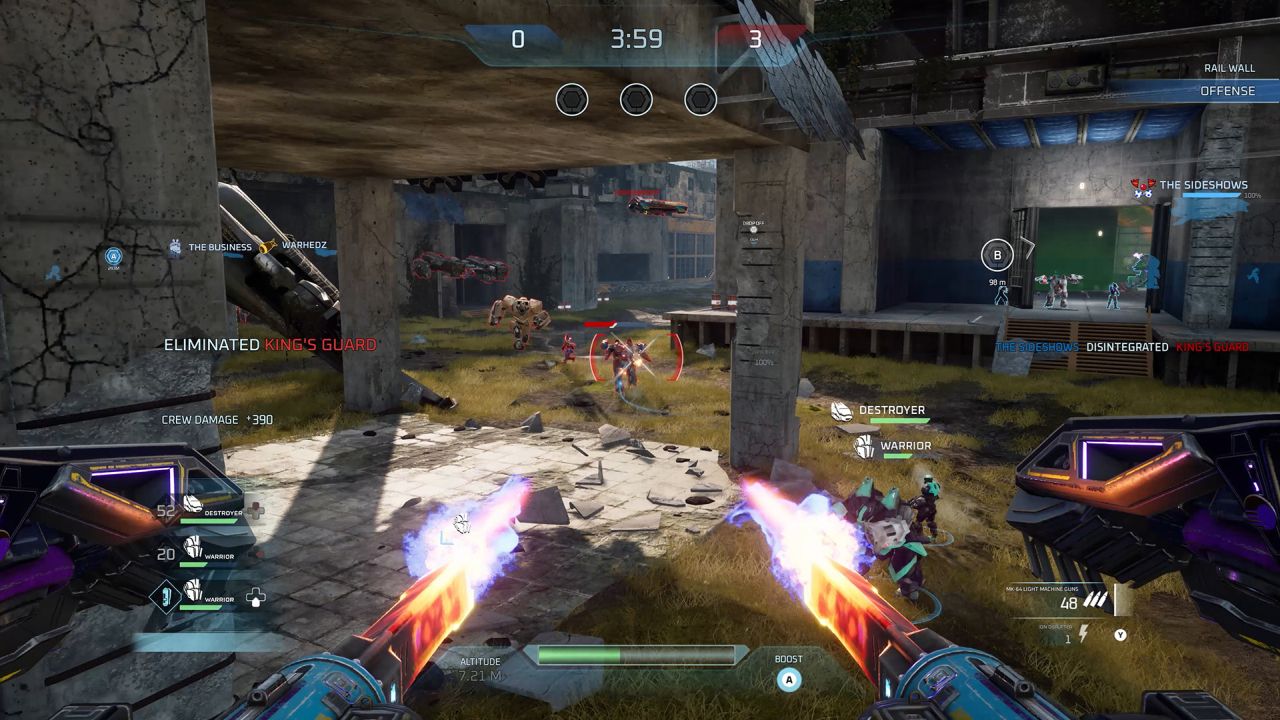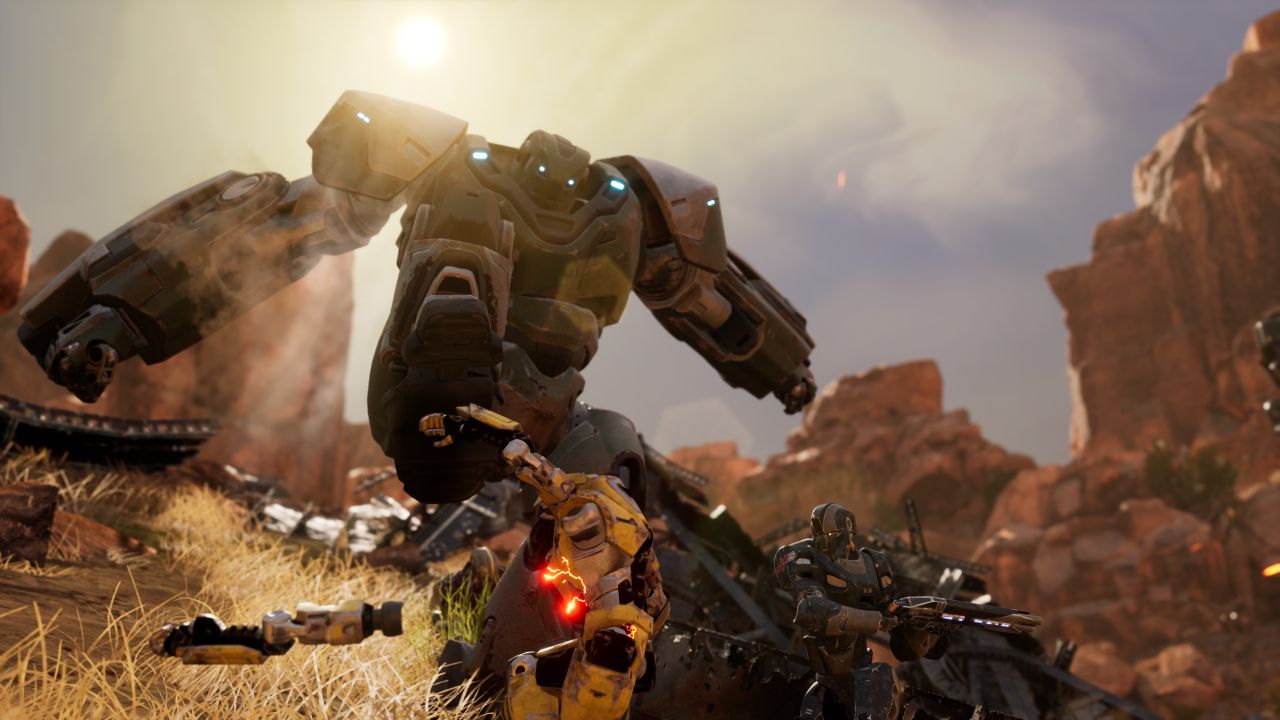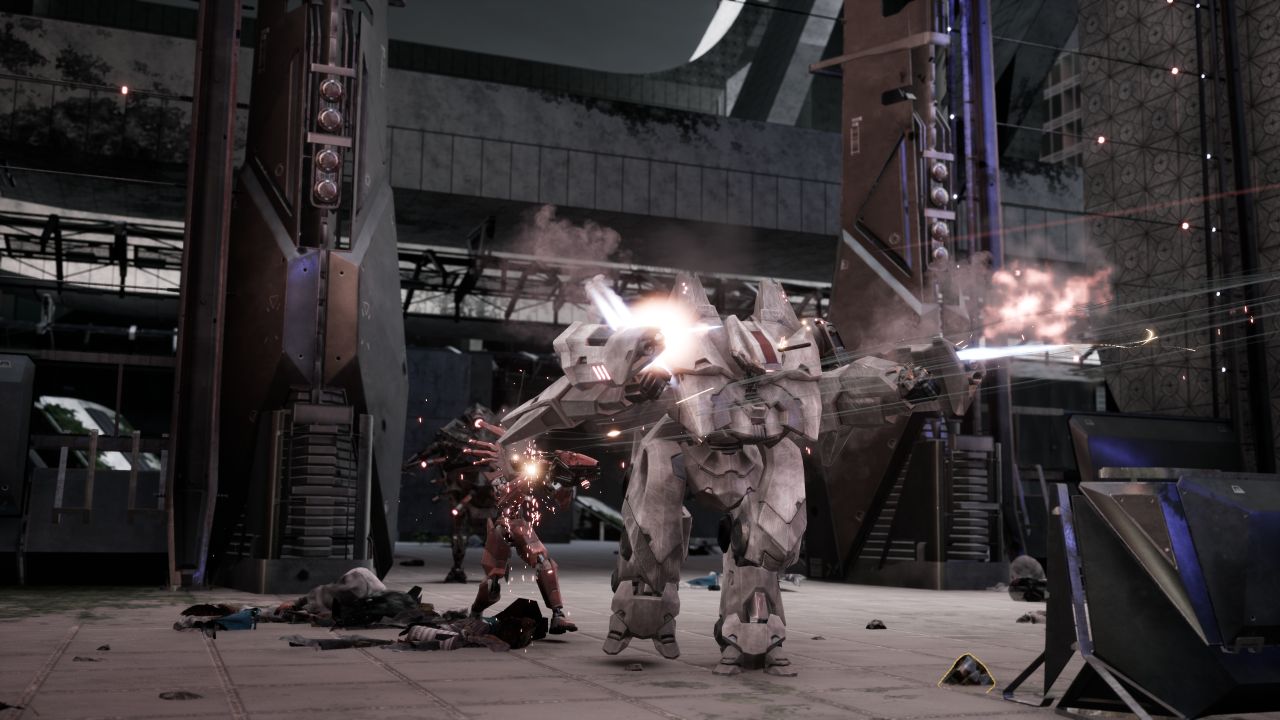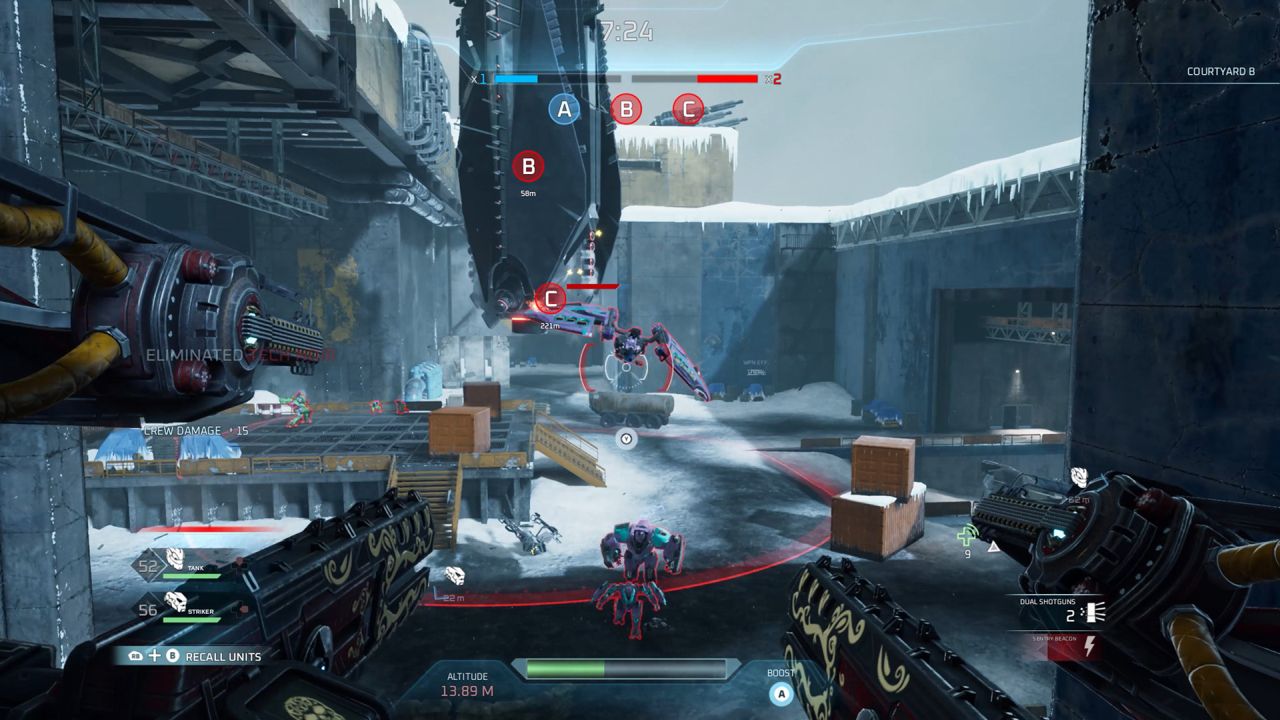Disintegration Review
Combining two different game genres in one experience is by no means a simple task, and often the end result is unable to fully realize the potential of either. Some genres are easier handle than others – action and RPG elements integrate well enough, while a strategy game is a much more difficult to merge. It sometimes works when the two genres are kept entirely apart – such as in Mount & Blade – but challenges can arise as in Brutal Legend. Disintegration is another such genre-mixing title, trying to merge a first-person shooter with elements of real-time strategy and unit command. Sadly, this debut title from V1 Interactive misses the mark and doesn’t offer a satisfying slice of either genre.

The game takes players into the future, where a series of societal and natural disasters threatened to eliminate the human race. To survive, humans invented the process of Integration, transplanting their brains into robots. The process went well, but a hostile group emerged, wanting to become a superpower in the new world order, and also force the remaining humans to join their robotic ranks. You are one such ex-human robot named Romer. When you have a chance to break away from the group, you do so, and find yourself in the company of a few other rebels.
Players learn all of this via a few introductory cutscenes, but the main focus of the game is a straightforward and derivative rebellion story. The somewhat unique setting is completely underutilized, as these robots don’t really have any features or behaviors that differ from being AI’s, for example. You have a few robot sidekicks that go on their journey with you, and you meet a couple of real humans, but nobody seems to be taking things seriously. There’s even a character death, but it is forgotten immediately after the cutscene in which it occurs. Dialog is bland and forgettable, and the events that unravel follow the simple narrative beats of a typical rebel story to a tee.
Over the course of the 8 hour campaign you will undertake a series of standalone missions. Between missions you can walk around a small and featureless hanger, where the only thing to do is listen to a brief monolog of a character, and grab three bonus objectives for the next mission. The missions themselves span between 20 and 40 minutes, and only offer a little variety. In one, you have to avoid periodical energy waves that disable your weapons and crew; in another, you have to escort a payload that only moves when you’re near; in another, you must hold out against a few waves of enemy forces. For much of the game though, you’re simply traversing the linear levels from one enemy encounter to the next.
While the game sells itself as an FPS and an RTS, it’s not good at either. It’s an FPS because you do play from the first-person perspective, and you shoot things. But you’re actually piloting a Gravcycle the whole time – a sort of floating hoverbike – so the game handles as poorly as you’d expect. No sharp reflexes or precise movement here. Looking around is fairly slow, you have one burst of speed/dodge on a long recharge, and changing directions makes you drift around before finally redirecting. You can also change your elevation above ground slightly. There is a scan mode that highlights items, but the game chooses to pointlessly clutter it with items that, it itself says, have no value or interaction. It’s like that vehicle section in other games, except in Disintegration it’s the entire experience.

And this is an RTS because for most missions, you have a squad of between 1 and 4 other robots to control. These poor suckers don’t get a hoverbike, so they just run around and attack enemies. Because you’re floating slightly above the action, you can give them commands. But your options are extremely limited – there is just one button to order the troops, and its function depends on what you’re pointing at. If it’s nothing, the units treat it as a move-to order; if it’s an enemy, they focus fire; if it’s an interactive object, they activate it. You control all units as one, and once they complete the objective, they run around to always be in front of you, so your strategic options are worthless when it comes to issuing tactical orders or holding a good position on the battlefield.
At least, your units do okay even when not commanded and deal some damage. The most strategic thing you can do is issue an individual order for the unit to use their special ability. Time slows down and you can aim where you want to place their attack, whether it’s a time-slowing dome, a series of rockets, or a stun grenade. While useful, these abilities have a very long cooldown, making them only usable maybe once or twice per encounter. There is an after-thought of an RPG system, as you collect scrap (XP) and upgrade chips during missions, and can improve yourself and squad members’ stats. But even in that, the game finds ways to fumble the design, by making scrap disappear – what other game deprives you of earned experience points because you don’t pick them up fast enough?
The swarms of enemies you’ll be facing are fairly basic, though most of them love using partial lock-on missiles, so even constantly moving side to side you’ll get hit. The occasionally bigger foes have their own rocket launchers, but for the most part it’s just cannon fodder. A larger enemy that gets introduced in the second half of the campaign acts as a miniboss but only has two attacks and is defeated the same way each time; it is then re-used ad nauseam.
You can shoot the enemies directly, but your damage isn’t all that big, so it’s not like you’re rewarded for taking matters into your own hands. For some unknown reason, the campaign constantly switches out your weapons, and this makes some missions vastly more annoying than others. So sometimes you might get a couple of machine guns, but next time you get a measly rifle and your secondary is a healing gun – that can only heal your units and not yourself. You don’t get to choose which squad members or how many come along to a mission, either. This leads us into the game’s surprisingly touchy difficulty levels.

There are four settings to choose from, before each mission. The first difficulty is easy, while the second says that you won’t need to use your units as much and can go in yourself more often. The third setting says it’s the recommended way to play, and yet the game defaults to the second. The fourth promises a formidable challenge, but it plays similarly to the third – in that you’re hiding behind a rock, sending out your units and painstakingly eliminating one enemy at a time before retreating to heal. Spike damage is a very real problem in Disintegration, and if a few enemies decide to shoot you, you’re going down. Aerial units especially seem to target you exclusively, making you hide behind rocks and buildings for a while. Your melee-only squad members just stand around when faced with aerial enemies or the mini-boss.
Much of the difficulty comes from the fact that you’re quite powerless and lack any healing. Your damage isn’t anything special, and you have no abilities. Most crucially, to restore health you only have three options. First, is to have the rare secondary weapon that creates a healing aura (only available during game-assigned missions). The second option is to hope and pray that an enemy drops a healing aura for you to fly in; and lastly, there are devices that also create healing, which must be activated by commanding your squad. The problem with the latter two, the most common ways to heal, is that this means you have to be on the front line and flying in low to the ground, which of course puts you right in the line of fire. If your squad members die, you have to fly over and recover them, so they respawn, which again puts you at risk; if you are shot down, a checkpoint restart follows (which can be quite far back). This issue is at its most prominent during story sections when you’re alone, and have literally zero ability to heal, forcing you to run and hide.
Besides the various poor design choices and questionable balance, Disintegration also performs poorly on a technical level. On a base PS4, there are numerous issues, but some just make little sense – like the fact that you can’t save mid mission, so if you quit, the entire thing has to be restarted. Sometimes, the units’ special attacks you bind to the D-Pad get shuffled around when you actually load the mission. Using the pause/or switching to PS4 home screen causes the cutscenes to glitch out of sync. Missions track that you’ve completed them, but fail to indicate on which difficulty. In-game, more serious issues arise as a boss disappeared during a battle, forcing a checkpoint reset. But perhaps worst of all are the serious framerate problems that crop up during intense firefights, slowing the game down to a near-crawl.
It’s certainly not because the game is pushing the PS4 hardware to its limits. Disintegration looks rather bland, as a generic robot-centric sci-fi setting. The character designs are safe, but competent. There is even some environmental destruction going on, which is a nice touch. But the textures leave room for improvement, and often take a few moments to stream in at the beginning. The different biomes you visit – a city, a forest, a desert – look decent enough for a mid-budget game such as this, but are hardly unique or memorable. The audio design is also simply serviceable.

If you’re craving more of this poorly conjoined experiment, there is a multiplayer mode. Shockingly, or perhaps bravely, the game decides to keep everything the same, which leads to a strange experience. You float around with a team in a 5v5 match, across three different objective-based modes. You still have the ground units to control, and also shoot at theirs. There are nine different factions to choose from, which defines the physical look of your ship and its weapons; some factions are so much more useful and powerful than others, the question of balance isn’t even a question. Matches usually result with one team pushing the other back to their spawn and just sitting there, since the pilots themselves are still pretty weak and must rely on the ground squads to make any real progress. It’s a confusing experiment that just doesn’t work. If you decide to keep playing, you’re given points and assignments, which can be traded in for cosmetics.
Disintegration is a strange experiment, but with an outcome so bland that it’s not even that interesting as a case study. Trying to mix two genres is tough, particularly when RTS gets involved. Sadly, this is neither a good shooter nor a well-designed tactical experience. It’s not even a case where removing one element would help the other survive. It’s a game that looks and feels like it should have been a cross-gen title in 2013, not 2020, for a new dev studio trying to break out during the start of the PS4/Xbox One era. The technical issues don’t do it any favors, and while it’s not a full priced game, there is just so little here to make it interesting, let alone worth recommending.
